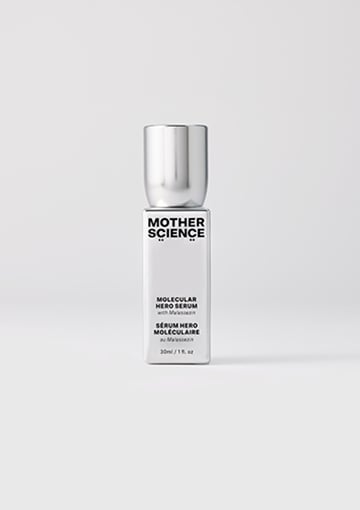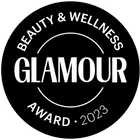One of the most typical skin concerns is dealing with uneven skin tone caused by dark spots, sun spots, and other forms of discoloration. However, the formation of these spots, or hyperpigmentation, is completely normal and common for most people because of environmental, lifestyle, and other causes—like sun exposure, post-acne inflammation, and more.
Because hyperpigmentation is so common, it’s also one of the skin conditions people are most eager to prevent and reduce. We consulted Dr. Pearl Grimes, leading world expert on hyperpigmentation, on what causes dark spots and what we can do to reduce hyperpigmentation and even skin tone. The good news is: there are clinically-proven solutions ranging from topical products to professional skincare treatments.
WHAT CAUSES HYPERPIGMENTATION?
To understand what causes hyperpigmentation, let’s start with a small skin science lesson.
Cells within our skin produce melanin, the substance that gives our skin its color. When these skin cells are damaged, they can produce too much melanin which can cause the appearance of dark spots or patches on the skin—AKA hyperpigmentation.
3 Common Causes of Hyperpigmentation
This type of skin damage that leads to hyperpigmentation can be broadly put into three categories; each category is defined below.
Sun exposure
Exposure to UV from the sun can cause skin cells to signal an overproduction of melanin and can lead to dark spots and patches forming. Sun exposure without proper protection is the most common cause of hyperpigmentation across skin tones.
Post-inflammatory hyperpigmentation
When skin goes into an inflammatory response from conditions like acne, it can also affect skin cells’ ability to regulate melanin and may lead to overproduction and the formation of dark spots.
Melasma
The formation of hyperpigmentation in larger patches called melasma is caused by internal hormonal changes. It’s common in those with thyroid conditions and during and after pregnancy and can be exacerbated by sun exposure.
TIPS ON HOW TO PREVENT AND REDUCE HYPERPIGMENTATION
Though dark spots and patches are common—and sometimes stubborn—there are easy skin care practices that can be used to prevent and reduce hyperpigmentation. These skincare hacks are your first line of defense to keep your skin looking even and bright.
Wear and Reapply Sunscreen
The most effective and important way to protect your skin from hyperpigmentation and other forms of damage is to wear sunscreen daily—and reapply regularly!
Use SPF 35 or higher on your face and body and reapply every two hours for trusty coverage throughout the day. And if you’re swimming or sweating, be sure to use a waterproof formula.
NOTE: There are innovative formulas that make it easy to reapply—even over makeup.
Being diligent about wearing and reapplying sunscreen helps protect your skin from UV exposure and damage that can lead to hyperpigmentation.

SKINCARE INGREDIENTS TO HELP REDUCE HYPERPIGMENTATION
When it comes to topical skincare that prevents and reduces hyperpigmentation, there are a handful of all-star ingredients that have been studied and proven to even skin tone. Here are the most powerful ingredients you might incorporate into your routine to address hyperpigmentation.
Malassezin
A naturally-occurring molecule in the skin microbiome and a powerful antioxidant, Malassezin has been clinically proven to be an ultra-effective solution for hyperpigmentation. Malassezin is a 10X more powerful antioxidant than vitamin C which gives it its incredible brightening and dark spot power.
With consistent use each morning and night, Molecular Hero Serum—powered by Malassezin— visibly reduces hyperpigmentation starting in just two weeks, without causing irritation. Molecular Hero Serum is the first and only product to include Malassezin.
Vitamin C
Vitamin C is one of the most common ingredients consumers use to brighten skin and reduce hyperpigmentation because it has been available in a topical format for many decades. Vitamin C has been shown to be effective in brightening skin tone but can take several months to work. Vitamin C is also an unstable ingredient, which can lead to it losing efficacy over time when exposed to light and air. Malassezin is proving to be a faster and even-more-effective alternative; the differences between vitamin c vs Malassezin make it clear which ingredient yields better results.
Retinol
A go-to ingredient for preventing fine lines and wrinkles, retinol is a highly effective ingredient for preserving skin’s youthful appearance. By speeding up skin cell turnover, retinol not only delivers smoother and more plump skin but also helps reduce the appearance of dark spots. Consistent use leads to more even and brighter skin, but irritation, purging, and skin barrier sensitization are common when first incorporating retinol into a skincare routine. Those with sensitive skin should start with a low dose and use 1-2 nights a week until skin has adapted.
ACIDS (AHAs/BHAs/PHAs)
Acids, such as alpha hydroxy acids (including glycolic, lactic, malic acids), beta hydroxy acids (salicylic acid is best known), and polyhydroxy acids (such as gluconolactone) are another type of ingredient that is effective in reducing hyperpigmentation. These chemical exfoliants help reduce dark spots by sloughing away dead skin cells and increasing skin cell turnover which leads to smoother and more even skin. When used alongside a hyperpigmentation serum, acids are effective at brightening overall skin tone.
PROFESSIONAL SKINCARE TREATMENTS FOR HYPERPIGMENTATION
While consistent, daily use of topical products at home is the most important practice for reducing hyperpigmentation and maintaining results, there are professional treatments that can help target stubborn dark spots and boost results. These procedures are performed by licensed practitioners and are generally very effective but sometimes include more down time for healing.
Chemical Peels
Chemical peels are a popular treatment for reducing hyperpigmentation. They are done by applying a chemical solution containing different acids to the skin to exfoliate and remove dead and damaged skin cells. Chemical peels range in intensity from minor treatments that require minimal downtime to stronger treatments that include skin peeling and shedding for 7–10 days after the procedure. This type of professional skincare treatment can help even skin tone, reduce dark spots, and even help with fine lines and wrinkles.
Laser
Laser treatments use beams of light to target and reduce hyperpigmentation. Depending on the type of laser that is used, this treatment either removes layers of skin—the more intense approach and one that is particularly effective for treating hyperpigmentation—or targets the upper layers of the skin to promote new collagen production and improved skin tone.
With this procedure, dermatologists typically recommend using a non-irritating hyperpigmentation serum before and after laser treatments to maintain results, as hyperpigmentation can return without a serum to maintain the results. Because skin is more susceptible to UV damage after this type of procedure, daily SPF and a strong antioxidant-based serum are essential to protect skin and prevent the reappearance of hyperpigmentation.
Microneedling
Microneedling utilizes ultrathin needles to pierce the top layer of skin and target areas of discoloration. By puncturing the skin, this treatment signals to the body that the skin needs to regenerate and, in doing so, creates a new layer that is more even in tone and texture.
A CLINICALLY-PROVEN HYPERPIGMENTATION SERUM
If visibly reducing hyperpigmentation is one of your main skin concerns, Molecular Hero Serum is a highly effective solution to add to your routine. This patented serum is formulated with a revolutionary ingredient, Malassezin—a naturally occurring molecule found on skin. And for the first time ever, this potent antioxidant is being used in skincare and offering radical results for reducing the appearance of dark spots, sun spots, and other types of discoloration.
With consistent use morning and night, Molecular Hero Serum visibly improves hyperpigmentation in as little as two weeks. And because of its non-irritating nature, it can be safely added to your current skincare routine and used alongside retinol, acids, lasers, and more.
WITH THE RIGHT PRODUCTS, YOU CAN REDUCE HYPERPIGMENTATION
While hyperpigmentation can be bothersome and sometimes stubborn, it’s a common skin concern for many people. And there are proven solutions that promote a more even skin tone including new innovations like Mother’s Science hyperpigmentation serum powered by Malassezin.
With topical formulas, consistency is the key to seeing a reduction in dark spots, sun spots, and other types of discoloration. Being diligent about following your skincare routine and applying (and reapplying) sunscreen throughout the day will yield the best results. With professional treatments for hyperpigmentation, your skincare practitioner will be able to guide you to the best options for your skin tone.




